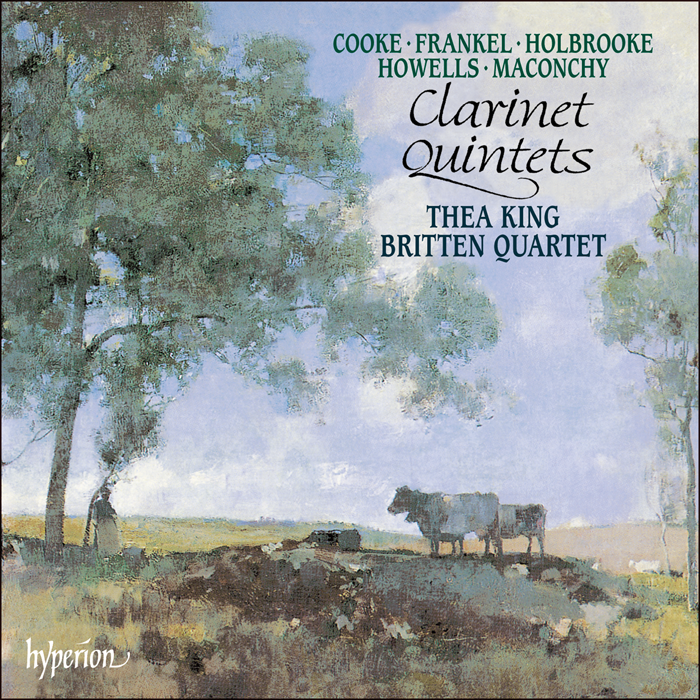Clarinet Quintets
Dame Thea King (clarinet), The Britten String Quartet
CDA66428
The clarinet’s range (three octaves plus) is actually not much wider than the flute’s or bassoon’s, but because it bestrides treble and bass it always seems to be so. (The flute can’t go below middle C and the bassoon strains perceptibly the higher it rises above it.) However, the clarinet is indisputably more flexible and more versatile in character than any other woodwind instrument—that is, composers can write a greater variety of music for it to play—and its timbre is one of the most seductive in the orchestra. This being the case it is odd that while there has never been any dearth of concertos for clarinet and orchestra, comparatively few composers have followed Mozart’s lead in writing chamber music for the clarinet. The great nineteenth-century exceptions were first Weber, then Brahms with his Op 115 Clarinet Quintet; then, in England, Stanford, a disciple of Brahms; then Herbert Howells, a pupil of Stanford. Although Stanford greatly favoured the clarinet (three Intermezzi for clarinet and piano 1880, Clarinet Concerto 1902, Sonata for clarinet, viola and piano c1912) his only pieces for clarinet quintet—the two Fantasies—were actually written (in 1921 and ’22 respectively) after Howells’s Quintet had been both composed (1919) and published (1921). Was Stanford stimulated (even inspired, for the Fantasies are vintage Stanford) by his favourite pupil’s success in a relatively un-favourite medium? He had every reason to be, for the Howells Quintet is not only one of his best works, but also a landmark in English chamber-musical history. Of course, though written just after the Great War, it belongs, like Stanford’s music, to an England, to an epoch, to a way of life, destroyed by that war in all or most of its essential aspects. (The same could be said of Howells’s other chamber music of this period, the Piano Quartet and the string quartet In Gloucestershire.)

